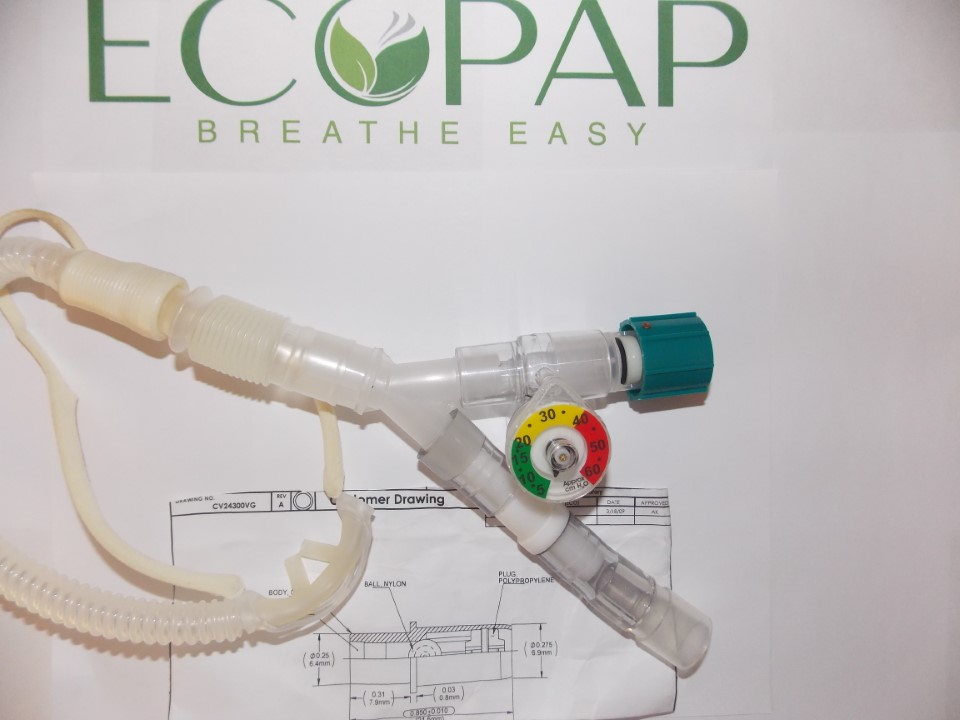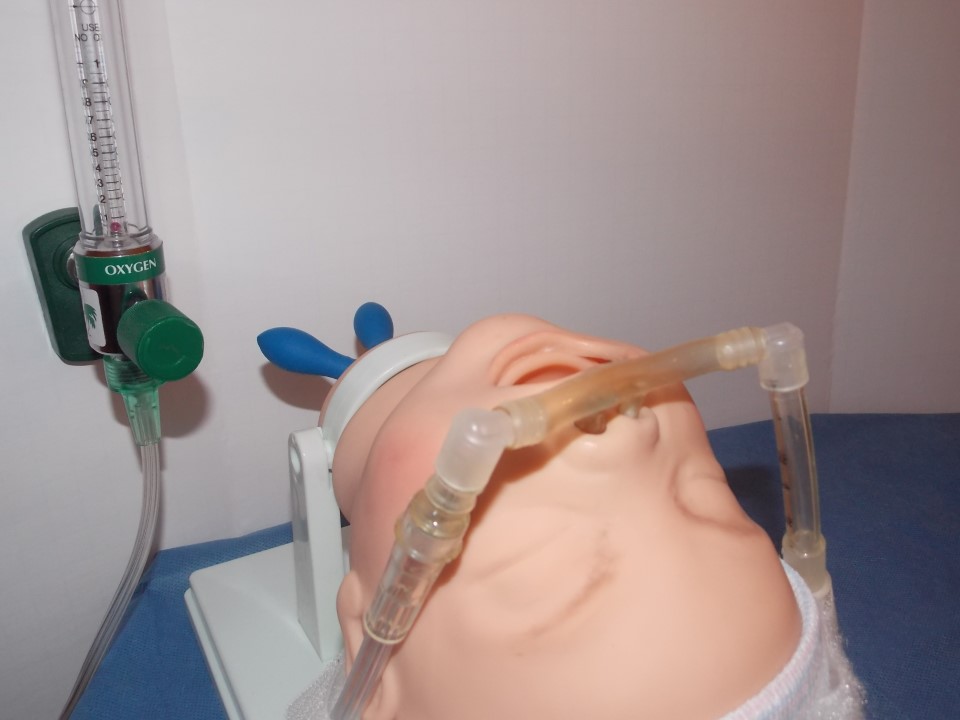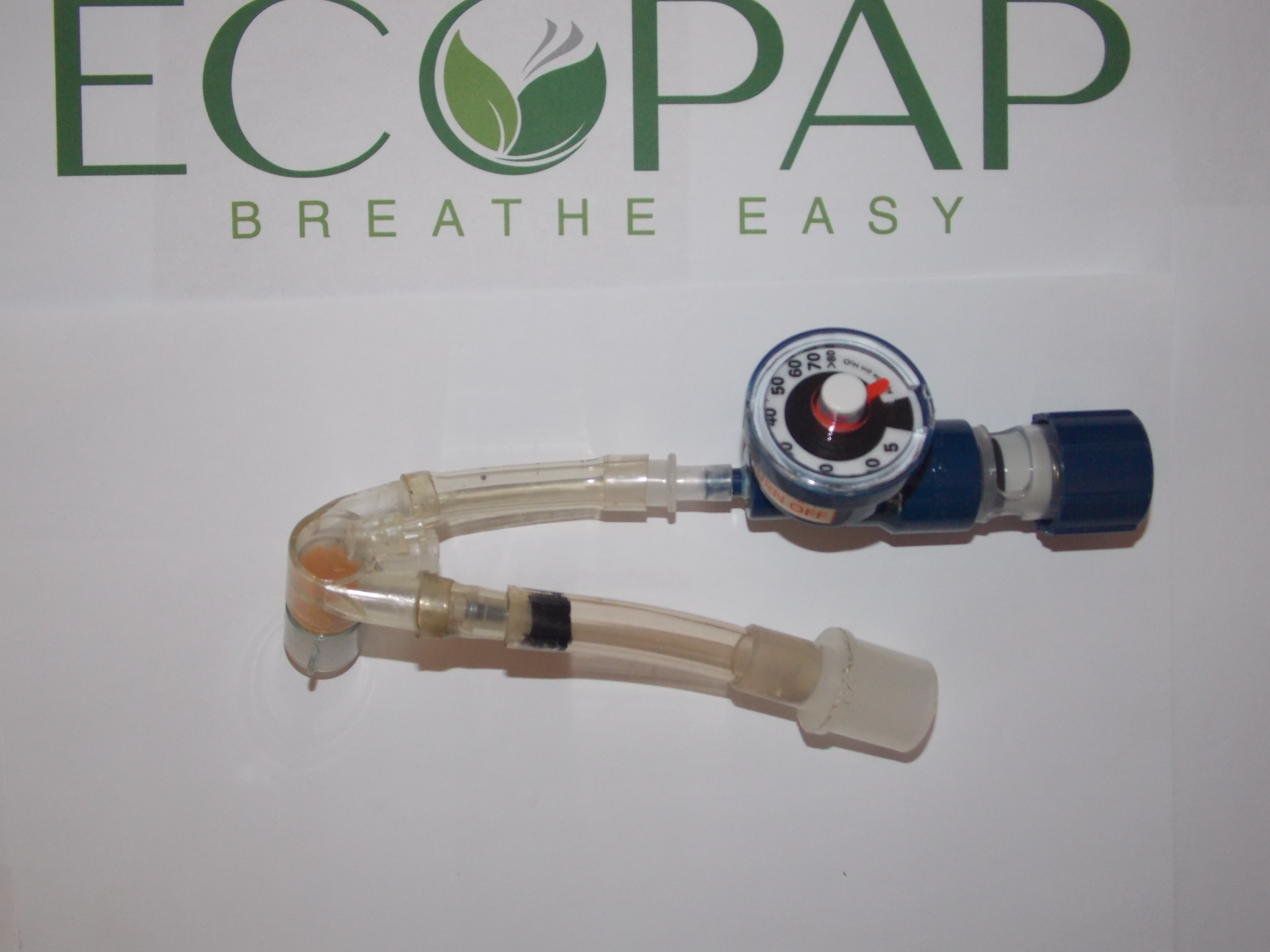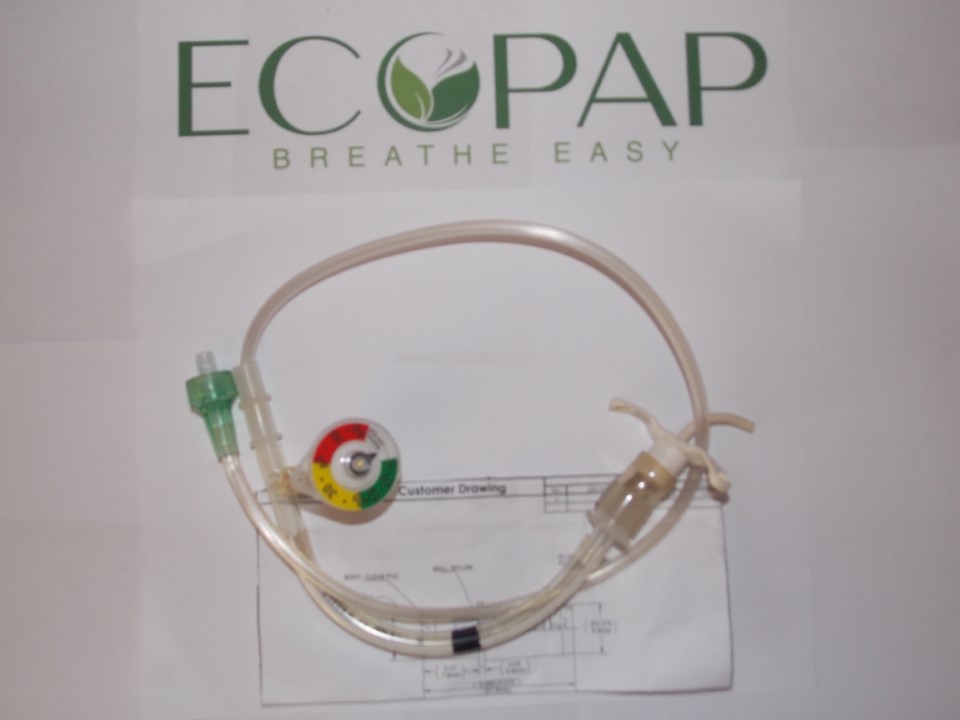Empowering Natural Breathing
Ecopap® offers a revolutionary line of respiratory devices designed to support the lungs naturally and non-invasively. Our products cater to both adults and infants, delivering continuous positive airway pressure (PEEP) without relying on electricity or complex machinery. These devices are engineered for ease of use, safety, and sustainability, making them ideal for clinical, home, and emergency settings.
Whether you need a device for long-term support or an emergency solution, Ecopap has you covered with innovative, eco-friendly designs.
Nasal Continuous Positive Airway Pressure Technology Explained
Watch how our innovative nCPAP (Nasal Continuous Positive Airway Pressure) devices work to provide natural, non-invasive respiratory support. This demonstration shows the gentle yet effective way Ecopap delivers continuous positive pressure through nasal prongs to maintain lung expansion and support spontaneous breathing in infants and neonates.
CPAP is a non-invasive form of respiratory assistance that has been used to support spontaneously breathing infants with lung disease for nearly 40 years. Following reports that mechanical ventilation contributes to pulmonary growth arrest and the development of chronic lung disease, there is a renewed interest in using CPAP as a prevailing method for supporting newborn infants.
Animal and human research has shown that CPAP is less injurious to the lungs than is mechanical ventilation. The major concepts that embrace lung protection during CPAP are the application of spontaneous breathing at a constant distending pressure and avoidance of intubation and positive pressure inflation.
A major topic for current research focuses on whether premature infants should be supported initially with CPAP following delivery or after the infant has been extubated following prophylactic surfactant administration. Clinical trials have shown that CPAP reduces the need for intubation, mechanical ventilation, and surfactant administration.
Nasal CPAP technology has evolved over the last 10 years and bench and clinical research has evaluated differences and physiologic effects related to those new devices. Ultimately, clinicians' ability to perceive changes in the pathophysiological conditions of infants receiving CPAP and the quality of care provided are likely to be the most influential factors in determining patient outcome.

Designed for Adults with Respiratory Challenges
The Ecopap Adult Nasal Device is designed to provide continuous airway pressure to adults who require respiratory support. It promotes alveolar recruitment and aids in maintaining lung volume without invasive machinery. Ideal for patients suffering from conditions like COPD, ARDS, and respiratory failure, this device supports natural breathing by allowing spontaneous inhalation and passive exhalation.
The device applies continuous airway pressure that keeps the lungs expanded while preventing the collapse of alveoli. By maintaining positive pressure throughout the breathing cycle, it enhances gas exchange and supports easier exhalation, making it a critical tool for managing chronic respiratory conditions.

Gentle Nasal CPAP Support for Infants
The Ecopap Infant Nasal Device provides gentle, continuous positive airway pressure through a specially designed nasal interface for infants and neonates. This device is ideal for babies with mild to moderate respiratory distress, offering non-invasive support that maintains lung expansion while allowing natural breathing patterns.
The device delivers continuous positive pressure through soft nasal prongs, creating a pneumatic splint that keeps the airways open. The gentle pressure prevents alveolar collapse while allowing spontaneous breathing, making it ideal for treating respiratory distress syndrome in premature infants and reducing the need for intubation.

Precise Airway Management for Critical Neonatal Care
The Ecopap Infant Endotracheal Device provides precise airway management for neonates requiring invasive respiratory support. This device combines the reliability of mechanical ventilation with the simplicity of Ecopap's non-electric design, offering controlled pressure delivery while reducing complications associated with traditional ventilation methods.
The device uses a specialized endotracheal tube with integrated pressure regulation to deliver controlled positive pressure directly to the lungs. The mechanical valve system ensures consistent PEEP while allowing for natural expiration, providing life-saving support for critically ill neonates while minimizing ventilator-associated complications.

Gentle Support for Neonatal Care
The Ecopap Infant Tracheal Device is specifically designed to meet the unique needs of infants in respiratory distress. This device delivers continuous positive pressure to keep the lungs open and facilitate spontaneous breathing, helping premature and low-birth-weight infants achieve better oxygenation. It's a safe and effective alternative to mechanical ventilation, with no electrical or battery dependence.
The device uses a cuffless tracheal tube and a one-way valve to provide continuous pressure, allowing for passive exhalation. The gentle, sustained airway pressure helps recruit alveoli, ensuring adequate lung volume while minimizing the work of breathing. Ideal for use in neonatal ICUs, the device is an essential tool for supporting infant respiratory care.

Innovative Support for Lung Expansion and Gas Exchange
The Open Lung Tool is an advanced respiratory aid designed to enhance lung function in both infants and adults. It works by promoting alveolar expansion and enabling better oxygen-carbon dioxide exchange. Ideal for patients undergoing respiratory therapy, this tool offers a low-pressure solution for improved lung recruitment without the mechanical pressures of traditional ventilators.
The Open Lung Tool operates by applying a continuous low-pressure airflow to expand the alveoli and enhance the efficiency of gas exchange. It's particularly beneficial for patients recovering from respiratory distress or those in need of supplemental oxygenation during weaning from ventilatory support.
Our devices are powered solely by medical gas, meaning they don't require batteries or electrical sources, reducing environmental impact and increasing accessibility.
By minimizing the need for complex ventilators, Ecopap devices provide an affordable solution for patients, healthcare providers, and facilities in need of cost-efficient respiratory support.
Every product is designed with patient comfort and safety in mind, utilizing soft, ergonomic materials and low-pressure technology to minimize discomfort and promote easy, spontaneous breathing.
Whether in a hospital, rural clinic, or at home, Ecopap devices are ideal for locations with limited resources or infrastructure.